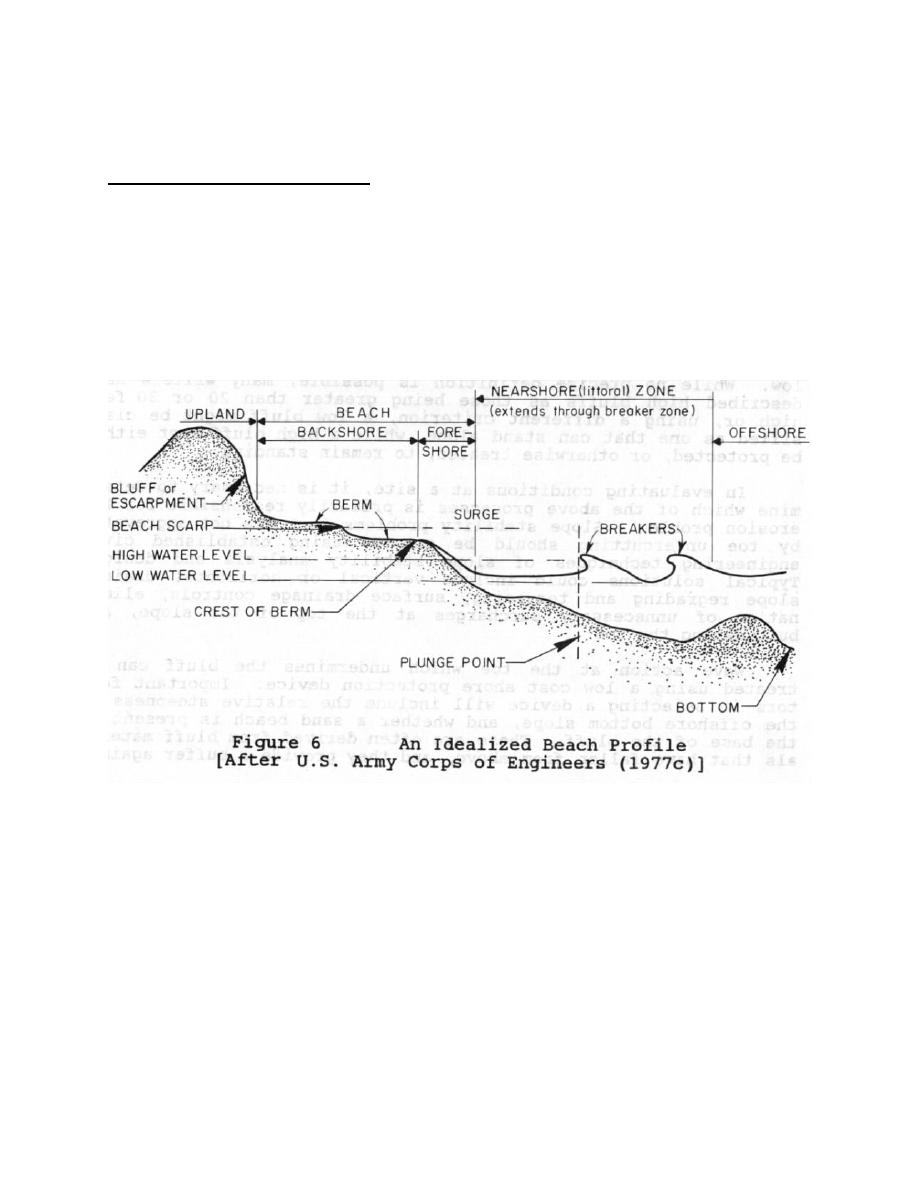
Conversely, flat offshore slopes inhibit heavy wave action at the bluff and provide for potentially better
protective beaches.
Low Erodible Plains and Sand Beaches
These are the most common shoreforms throughout most areas of the United States. They are
primarily composed of sands and gravels that gently rise from the water's edge and seldom attain a height
of more than five to ten feet above the Stillwater level.
Figure 6 is a definition sketch of an idealized beach profile. Waves approach from offshore,
finally breaking and surging up the foreshore. Above the foreshore, the profile flattens considerably to
form a broad berm, which is not reached by normal wave activity. The beach berm will sometimes be
backed by a low scarp leading to a second berm and eventually to a bluff or sand dune.
The profile will reach some equilibrium shape in response to normal water levels and wave
activity. This equilibrium will be disturbed and erosion will begin if the long-term water level rises or
predominant wave heights increase. For a water level rise, a new equilibrium profile will eventually
form with the same shape as the old, but shifted landward and upward. Similarly, increased wave
activity causes a nearshore bar to grow as the beach erodes. Eventually, as this bar grows and the depths
of water decrease, the larger waves will break farther offshore. This weakens their attacks on the beach
and equilibrium is restored.
At open coast sites, the return to normal water levels and waves will initiate a healing process that
may return the profile to essentially its initial position. This is because the flat swells tend to move sand
back to the beach from the nearshore bar. At sheltered sites, however, these swells are not present, so the
healing process never occurs, and storm-caused erosion losses tend to be permanent.
16



 Previous Page
Previous Page
